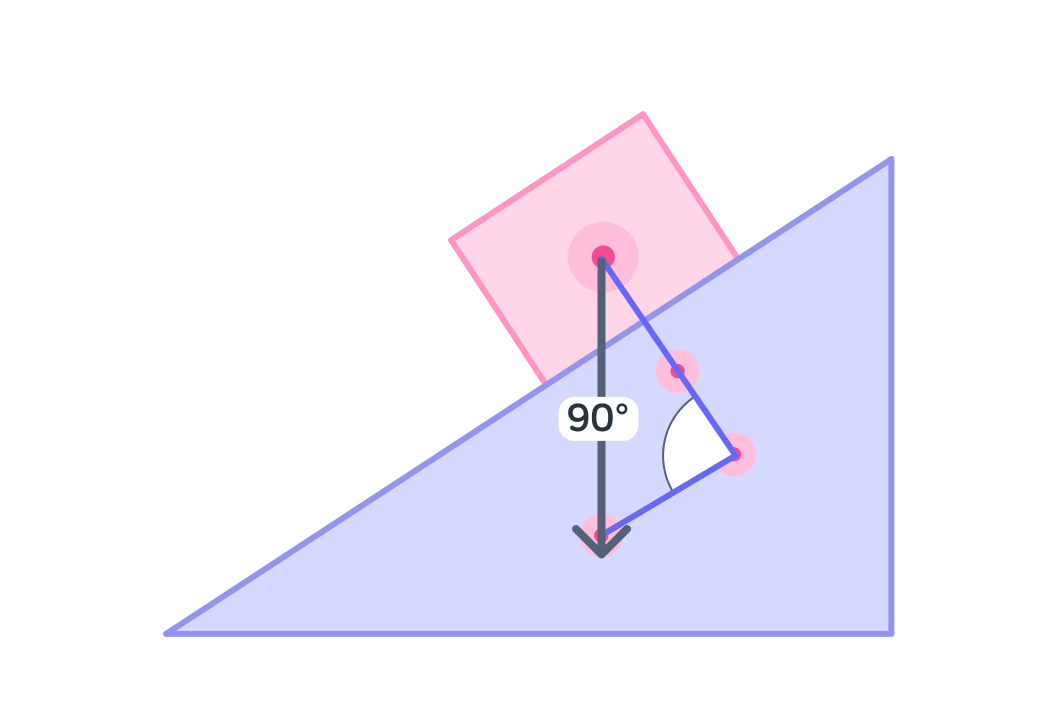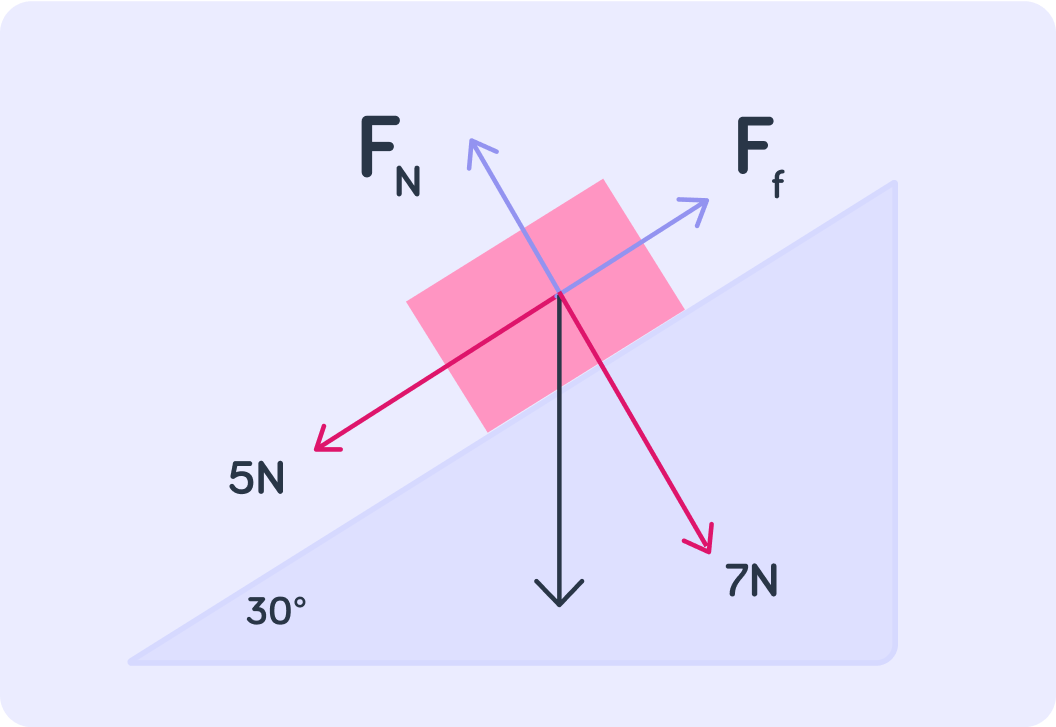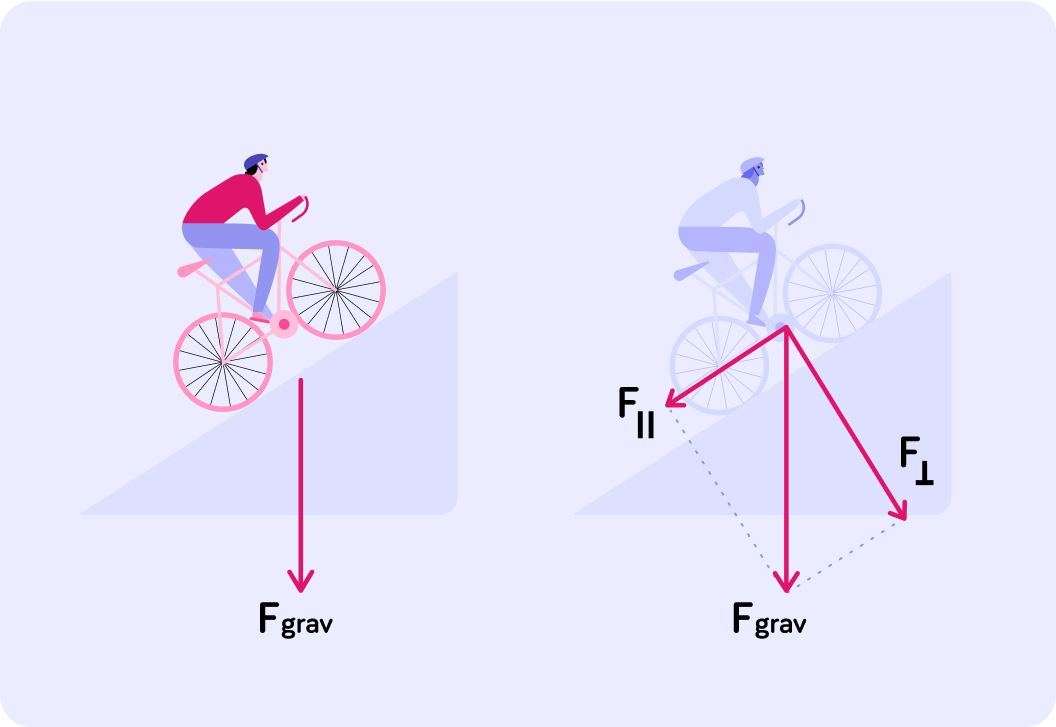YOU ARE LEARNING:
Resolution of Forces

Resolution of Forces
A force can be broken down or resolved into its component two forces.
What does it mean to resolve a force?

A box is resting on an incline (a slope). If you were to resolve this force, what do you think you would find?


In the resolution forces when an object is at an incline, one component would act down the slope, and the other would act at 90° to the slope.
So you are not just looking for the horizontal and the vertical force anymore. However, notice that on a slope, the component forces are still at a right angle to one another.

In the resolution of a gravitational force on a slope, one component always acts parallel to the slope and another acts perpendicular to it. In other words, some of the force acts down, and some acts down the slope. We can resolve the force to find the magnitude of the force in each direction.
If an object is on an incline, in which direction will its component forces act?

You have resolved a force into 2 components. How will you find the magnitude of the forces in each direction?

If an object on an incline is in equilibrium, we can use the resolution of forces to find the magnitude of all forces acting on the object. Remember that an object in equilibrium is in a constant state of motion, and all forces must be balanced.
An object is resting on an incline. It is in equilibrium.
The downward force has been resolved into its two components.

Force f opposes the force acting down the slope. Which type of force is it?


If the object is in equilibrium, then all forces acting on it must be balanced. Therefore, what is the magnitude of the force of friction?


The normal force (Fn) acts perpendicular to the surface. What is its magnitude?


Imagine you are riding your bike up a hill. It is much more difficult than riding on the flat. Which statement do you think best describe why this is?

The first image shows the downwards force of gravity, acting on a cyclist as he cycles up a hill.
We want to find out the component forces which have this effect.

In the second image, you can see the force resolved into 2 components. In which direction is force 2 acting? Answer with uphill, or downhill.


The components of the force acting on the cyclist are downhill, and towards the ground.
This explains why you need to apply more force to ride your bike up a hill!

